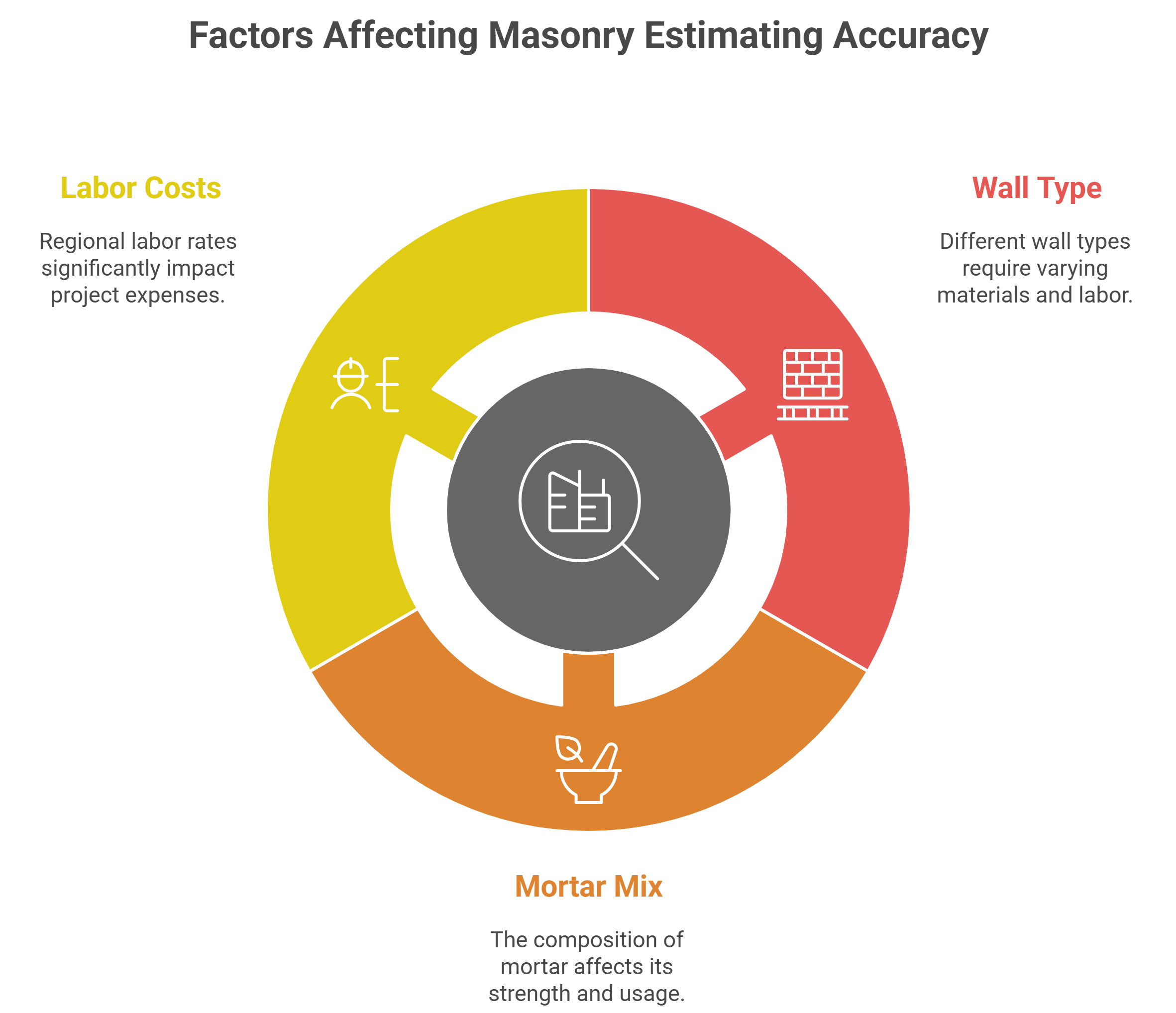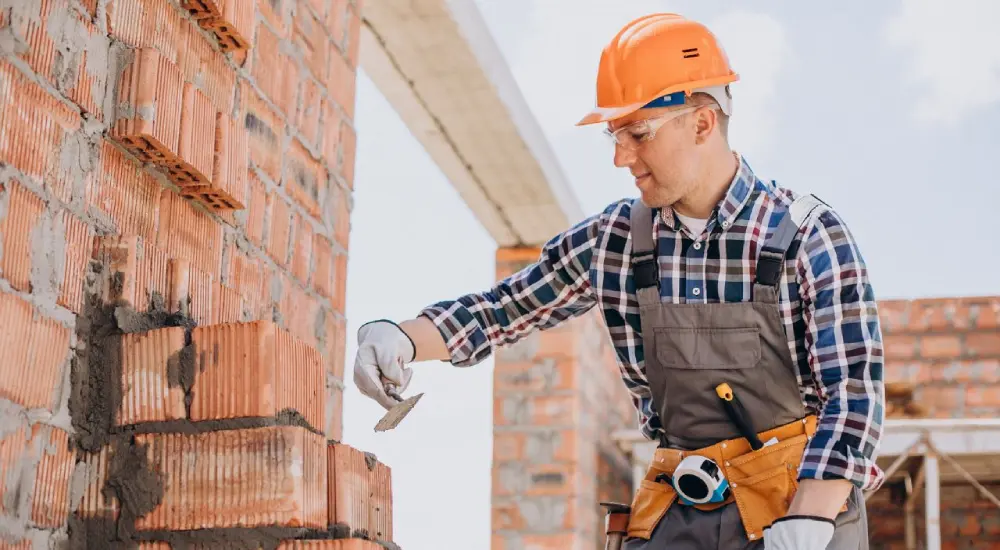Accurate masonry estimating forms the backbone of successful projects, controlling budgets while ensuring timely delivery and minimising risks. Trades like blockwork, bricklaying, and stone veneer demand precise calculations, especially since masonry works often account for 5–15% of total building costs in Australia, according to Rawlinsons data from 2024. This precision directly boosts profitability for builders by avoiding costly overruns.
Key Components of Masonry Estimating
Breaking down costs starts with recognising materials, labour, and logistics as foundational pillars in masonry estimating. These elements interact closely; for instance, material choices influence labour demands while site access affects overall delivery efficiency. Overlooking these ties can inflate budgets unexpectedly, but a structured approach ensures balanced projections tailored to Australian conditions.
Interdependencies shine through when material shortages delay crews or poor logistics hike transport fees. In practice, effective masonry estimating weighs these against project scale, drawing on local supplier data to refine accuracy. Recent industry reports show materials typically comprise 40-50% of costs, labour 30-40%, and overheads 10-20%, underscoring the need for holistic views.
- Materials: Bricks, blocks, mortar, and reinforcements.
- Labour: Skilled bricklayers, apprentices, and supervisors.
- Overheads: Equipment hire, insurance, and compliance fees.
- Logistics: Transport, storage, and site preparation.
Material Quantities and Unit Costs
Calculating precise volumes prevents budget slips by factoring in brick or block counts alongside mortar needs and realistic wastage. For example, a standard wall might require 60 bricks per square metre, but site-specific adjustments for curves or openings refine this further, enhancing masonry estimating reliability.
Unit costs vary regionally; in NSW, clay bricks often range from $1.60 to $2.40 per square metre laid, while concrete blocks might hit $2.00-$3.00. Incorporating these into estimates, alongside entities like aggregate suppliers, ensures quotes align with market realities without excess padding.
- Clay bricks: $0.80-$1.20 per unit, durable for exteriors.
- Concrete blocks: $1.50-$2.50 per unit, ideal for load-bearing.
- Natural stone: $5.00-$10.00 per unit, premium for veneers.
Labour Productivity and Crew Rates
Crew efficiency hinges on experience and conditions, directly shaping estimate precision in masonry estimating. Australian averages suggest skilled teams lay 800-1000 bricks daily, but factors like weather or complexity can drop this by 20%, demanding flexible adjustments for true competitiveness.
Balancing crew composition by mixing journeymen with apprentices optimises rates while maintaining quality. Factors such as labour yield and downtime highlight how underestimating these elements skews bids, connecting to broader construction trade estimating where precision fosters long-term project success.
Equipment, Scaffolding, and Site Logistics
Access tools like cranes and scaffolding elevate safety and speed, yet their costs mount quickly on tight urban plots. Sequencing deliveries minimises downtime, but poor planning can add up to 12% in overheads, as seen in confined Sydney sites where logistics demand extra foresight.
- Cranes for heavy lifts.
- Scaffolding systems for multi-storey access.
- Forklifts for material handling.
- Temporary fencing for site security.
Factors Affecting Masonry Estimating Accuracy
Estimator know-how paired with local insights sharpens outcomes, turning potential pitfalls into strengths. Design variables like material specs interplay with site realities, where even small oversights amplify errors; seasoned pros mitigate this through layered checks, ensuring masonry estimating stays grounded.Masonry Takeoff for Accurate Estimating and Cost Planning
 External influences, from supply chain fluctuations to regulatory shifts, further test accuracy. Volatility in cement prices, for instance, requires ongoing monitoring, blending concrete estimating elements to buffer against rises that could derail budgets in volatile markets.
External influences, from supply chain fluctuations to regulatory shifts, further test accuracy. Volatility in cement prices, for instance, requires ongoing monitoring, blending concrete estimating elements to buffer against rises that could derail budgets in volatile markets.
- Bond type: Running vs Flemish for strength variations.
- Weather conditions: Rain delays mortar setting.
- Supplier reliability: Local vs imported for lead times.
Wall Type, Thickness, and Bond Pattern
Cavity walls demand more mortar than solid ones, altering volumes by up to 30% per square metre due to insulation gaps. This shift not only boosts material needs but tweaks labour inputs, making tailored calculations essential for spot-on masonry estimating
| Wall Type | Mortar Volume/m² | Material Cost/m² |
|---|---|---|
| Solid brick | 0.02-0.03 m³ | $50-70 |
| Cavity brick | 0.03-0.05 m³ | $60-80 |
| Blockwork | 0.025-0.04 m³ | $40-60 |
Mortar Mix Design and Waste Allowances
Stronger mixes like M4 increase cement ratios, pushing costs higher for demanding applications. Waste allowances of 3-5% for uniform blocks contrast with 8-10% for stone, where irregular shapes amplify scraps; accurate factoring here safeguards overall masonry estimating integrity.
Local Labour Costs and Regional Variations
Rates fluctuate by location, with Sydney bricklaying averaging $95 per square metre versus 15-20% less in regional NSW, per Rawlinsons data. These differences, tied to transport and demand, emphasise adapting estimates to boost competitiveness without compromising quality.
Masonry Estimating Across Project Types
Residential scopes often prioritise aesthetic finishes, shifting masonry estimating toward detailed veneers and smaller batches. Tolerances remain tight under NCC standards, where AS 3700 guides durability; this demands granular takeoffs to align with homeowner expectations and avoid costly tweaks.Masonry Estimating Services – Bids Analytics LLC
Commercial ventures scale up, integrating concrete estimating for robust structures like facades. Higher volumes enable efficiencies, but stringent fire ratings add layers, requiring precise masonry estimating to balance compliance with budget realities in bustling urban builds.
Landscaping focuses on functionality, where retaining walls incorporate drainage and soil factors. Costs vary with height, averaging $500-700 per linear metre; thorough masonry estimating here prevents oversights in reinforcement, ensuring stability across diverse Australian terrains.
- Single-storey homes: Basic brick veneers.
- Multi-unit apartments: Load-bearing blockwork.
- Office towers: Engineered stone facades.
- Public parks: Decorative paving.
Residential Homes and Extensions
Veneer brickwork pairs with lintel specs in homes, where small-scale mixing keeps costs down. Residential masonry hits $350-450 per square metre on average; detailed takeoffs curb underbids, fostering trust and repeat business in suburban expansions.
Commercial and Institutional Buildings
Layered methods merge concrete estimating with masonry for complex designs, handling facade modules and acoustic needs. Efficiency from bulk buys offsets tight tolerances, but fire ratings demand extra scrutiny to maintain project viability.
Retaining Walls and Landscape Masonry Works
Slopes and drainage dictate reinforcements, elevating costs for taller structures under varying soils. Accurate estimates avert failures, blending entities like geofabric with block choices to deliver enduring features without excess expenditure.
Modern Tools and Software for Masonry Estimating
Digital tools streamline workflows, slashing manual errors and accelerating bids in masonry estimating. From auto-calculations to real-time updates, they integrate seamlessly with cross-trade needs, like roofing estimate alignments, ensuring cohesive project overviews for offshore teams.
Adoption surges as precision rises, with Australian firms leveraging these for competitive edges. Stats show digital methods cut variances by 25-30%, per IBISWorld 2024, empowering estimators to focus on strategy over spreadsheets.
- PlanSwift: For quick takeoffs.
- Bluebeam: Annotation and measurements.
- Buildxact: Cloud-based quoting.
- Cubit: 3D modelling integration.
Digital Takeoff and 3D Measurement Tools
Software like PlanSwift or Buildxact automates area calcs and wastage, reducing errors by 25-30%. Laser scans overlay models for as-built checks, enhancing masonry estimating through parametric entities that validate quantities instantly.
Cost Estimating Platforms Used in Australia
Tools such as Cubit, CostX, Cordell, and Buildsoft offer live pricing and supplier links. Their features, ranging from database integration to regional updates, streamline masonry estimating and provide authoritative data for trustworthy bids.
Data-Driven Approaches to Improve Masonry Estimates
Analytics refine predictions by mining past data, cutting guesswork in masonry estimating. AI spots patterns, alerting to risks early; this shifts focus from reactive fixes to proactive planning, yielding tighter controls.
Benefits compound as benchmarks inform bids, with ACIF 2023 noting up to 18% variance reduction. Integrating these approaches fosters reliability, essential for offshore operations navigating Australian regs.
- Benchmarking against peers.
- Predictive alerts for overruns.
- Time savings in reviews.
Using Historical Project Data for Benchmarking
Referencing prior jobs trims variances from 12% to 4% after analysing 10 sites, boosting bid realism. This builds credibility in tenders, where data-backed masonry estimating stands out.
Integrating BIM for Real-Time Quantity Validation
BIM links IFC models to databases, validating walls and volumes on-the-fly. Workflows save 10-15 hours per project, using parametric quantities and live feeds for precise masonry estimating.
Common Estimating Pitfalls and How to Avoid Them
Outdated prices often derail bids, inflating costs mid-project; regular market checks counter this, blending concrete estimating insights for stability. Neglecting wastage compounds issues, but allowances tied to specifics keep masonry estimating grounded.
Poor productivity assumptions mislead, leading to 8% average deviations per ICMS 2023. Training cycles and reviews mitigate, ensuring estimates reflect real-world dynamics without bias.
- Update supplier quotes quarterly.
- Factor site audits early.
- Simulate crew scenarios.
- Cross-verify with peers.
Future of Masonry Estimating in Australia
AI will predict costs with machine learning, factoring sustainable materials like low-carbon blocks. This evolution promises greener workflows, where carbon tracking integrates seamlessly into masonry estimating for eco-conscious builds.
Automation via smart sensors will capture site data live, slashing manual inputs. Optimism grows for integrated systems that merge concrete estimating, delivering faster, more resilient outcomes in a shifting industry.


